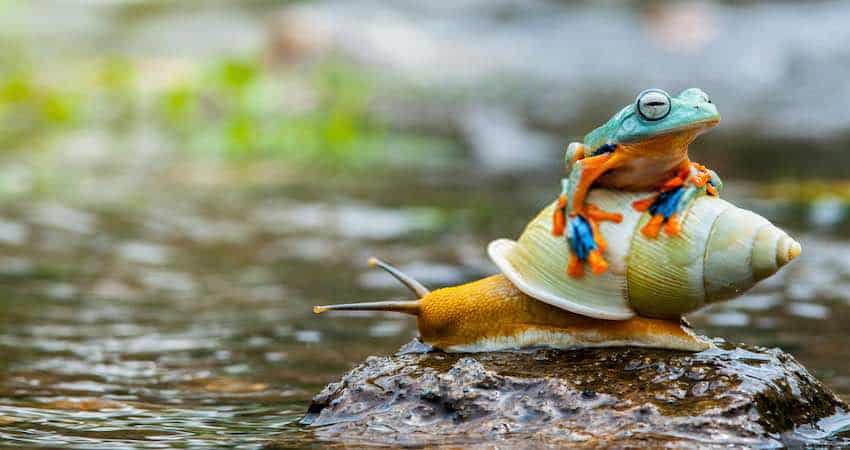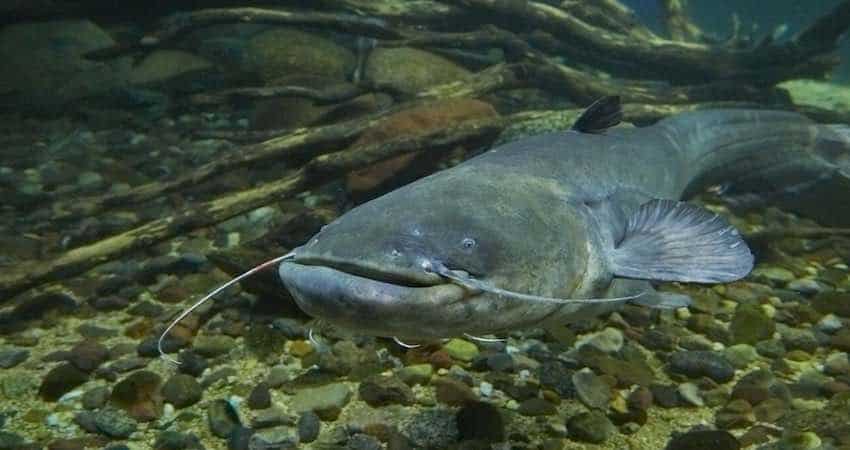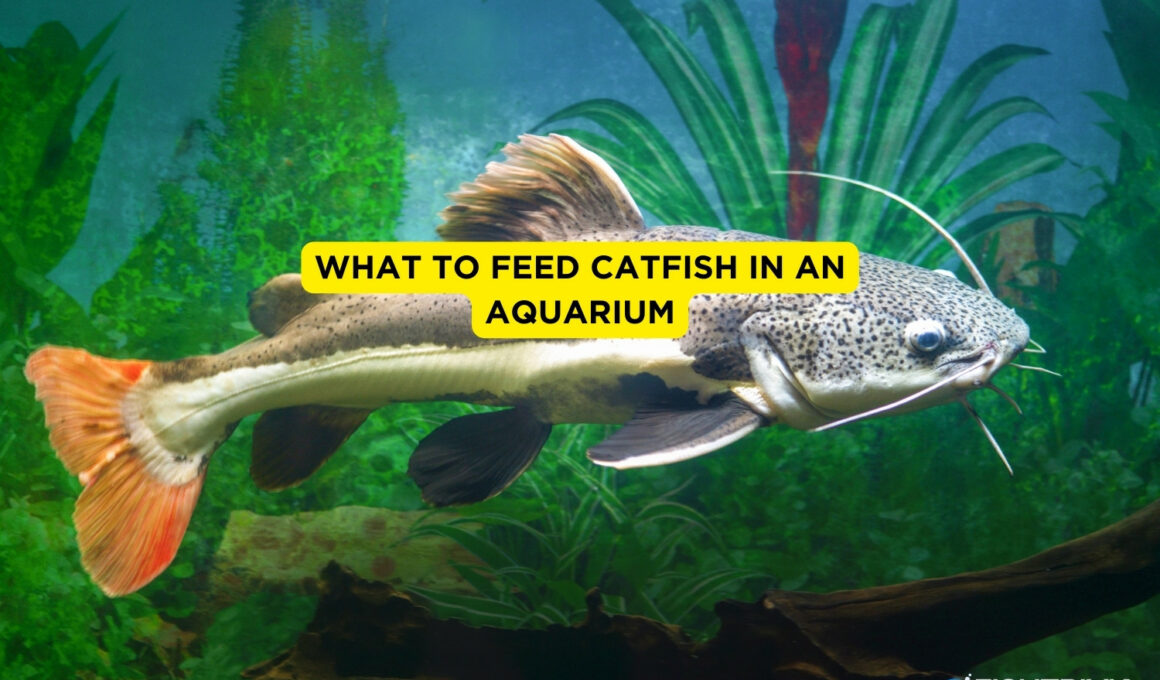In this article Show
The wild fish feeding policies should be as varied as the species themselves, it should not be unexpected. A renowned catfish specialist advises us that all catfish still eat greens in their diet and how they can be eaten.
Nothing except catfish is the unnoticeable bottom-feeder fish that you’ll find in every aquarium!
You lead to keeping the tank clean by algae feeding and you can consume every food particle which the other fish in the tank did not eat. They come from all over the world, including many of South America’s most common animals.
They still have simple routines, so catfish will be yours if you are busy and have no time to hold your aquarium. You should count feeding as one of the most important activities for you if you enjoy taking care of catfish.
It is also important to choose the right catfish food to provide a well-balanced diet for your animals. Let’s get started with the diet chart for your catfish.
Also worth reading;
- 10 Different Types of Molly Fish: Can They Live Together?
- The Best Fishes To Keep With Shrimps In A Freshwater Tank
- Can Goldfish See In The Dark? You Need to Know
- What to Feed Bluegill In An Aquarium
What To Feed Catfish In An Aquarium?

1. Snail as Catfish Food
Most catfish won’t eat shrimp or snails, particularly when inverted adults. In general, shrimps and snails are silent, but friendly companions.
It is also worth noting that some particular varieties of cork catfish are larger and have multiple features than other catfish.
Snail eggs may nevertheless be eaten or harmed. Other well-known culprits are Loaches. Loaches and snails feast. Loaches are also fish recommended for snail management.
The catfish will keep the population of these irritating snails on a low level by eating snails. Furthermore, snails typically live on the ground, so you can quickly locate them and be sufficiently accessible for food.
2. Sardines as Catfish Food
The keepers feed in an aquarium their catfish sardines too. You can buy this little fish from bait stores, and big catfish enjoy it.
For culinary purposes, most flaky goods contain a blend of fish meal, calamitous rice, shrimp meal, earthworms, spirulina, as well as all nutrients for fish. That will give all your fish ample food, and your cories will consume any remainder when they are in the gravel.
3. Worms as Catfish Food
The catfish may also have small live worms. In bait shops and feed stores, blood worms and other bait worms can be purchased and put in the catfish tank for food.
Fortunately, these worms sink and are scavenged quickly with catfish. They are still very inexpensive, and when you want to store them you can ice them – or feed them live if your catfish is a feisty fish.
We would suggest Fluval Bug Bites Tropical Fish Food. High in protein, which makes it suitable for daily catfish treatments but also rich in nutrients and vitamins.
Then you should periodically feed these frozen worms to your catfish because they are otherwise full of nutrients and vitamins from the plant material. These vitamins have been shown to mitigate stress and reduce the risk of contracting disease.
As your catfish require a balanced diet, you should give them living and freeze-dried worms or cyclops. Meals are a good source of protein for all fish that have a meaty diet.
4. Algaes as Catfish Food
Algas is a key foodstuff for many loricariids, as mentioned above. The availability of live algae is an aim to aspire for; it gives fish a more natural environment by grazing food, as it is typically in the ecosystem.
They are perfect because a population of other fish may not dive to the bottom of the tank for food or simply for meat. We recommend API Fish Food Pallets for your beloved cory fish. It provides a large amount of protein in plants. He’s going to sink to your fish. Good for picky fish.
These wafers are outstanding and made with just the finest ingredients. The main ingredient is plants that are cleaner and safer for your catfish. They have protein too, but fruit and vegetable food is a big part of their material.
5. Vegetables as Catfish Food
Cats like crabs, blood worms, and even crabs salt even love frozen foods. Keepers will cut up little pieces and place them in the aquarium and wait before it sinks.
Any catfish will grow up to an inch longer per month with a steady diet of meats like this. This feed provides ample nutrients to help catfish develop and is particularly good for little or young catfish.
Real food is a tried and tested approach for supplying loricariids with green food, as described above in some commercial foodstuffs, and a lot more wild catfish for that reason. Many vegetables are an excellent and common source of food.
This is an environment in which you can try to discover the flavor of your catfish. The vegetables based on the fish, including pea and turquoise, would be accepted by your catfish but veggies are not your favorite food.
6. Shrimp Pallets as Catfish Food
The shrimp pellets contain a huge volume of protein, processed with the finest food. In addition to normal turf, fruit, and years, they have more than enough nutrition to provide a balanced diet for your corydoras.
If you do, soak the bits until you put them into your water tank to have your fish pellets if your pellets are picky with platform species. We would recommend Tetra Baby Shrimp Sun Dried Treat as your cory catfish food.
This means that the nodes have a certain protein on the diet for a reward and a supplement sometimes. It’s lunch and a balanced diet. This is ready for protein. Some of the fats occur naturally. No fog of vapor. It sinks to your cory fish to feed fast.
7. Common Fish Food
The standard aquarium feed is made from pellets or from other retailers that have been imported and specially made for catfish. Pellets and pellets can get soggy, but they can be very messy.
Pellets and foods often break down into the water which can affect the consistency of the water. Most couldn’t hit the ground right though it broke down! But they’re soft enough to feed a catfish anyway, so having them around is pretty handy.
These foods certainly have many other components to complete their nutritional profile, including vitamins and minerals. Many of these commercial foods are found in different formats — flakes, disks, sticks — so that you can pick the one that suits the needs of your wads.
8. Zucchini as Catfish Food
Be sure that your catfish are chewing your skin with courgettes — this is where much of vitamin A is found. Often it takes some preparation because you always eat the lighter middle and then you go fishing.
They can take to the tank if you leave the skins and select the other snacks. Often, split the skin in one piece if you wear cross-country rounds to prevent a skin ring. This can be a concern.
9. Meat Like Catfish Food
Finally, it should be remembered that even the more algae-feeding loricariids consume smaller amounts of meat in the process daily. As a result. Insect larvae, small crustaceans, etc. may include.
As well as foods, algae, and vegetables, in addition to standard commercial items, frequently contribute to this added taste and nutritious punch, in limited amounts, such as frozen or frost-dry saffron shrimp, blood worms, limited cricket, etc. You may serve it right next to other foods or as a treat for yourself.

Some Considerations To Be Done Before Feeding Aquarium Catfish
Here are the things to consider before feeding aquarium catfish;
1. Filtration
The water in the tank can be treated three or five times an hour using an aquarium filter. The filter will have to transfer at least 60 gallons of water per hour in a 20-gallon tank. Ignore the instructions of the vendor to select and customize the filter.
2. Heat & lights
Before you carry them home, check the temperature your fish may like. Water between 74 degrees and 78 degrees Fahrenheit is needed for catfish.
For every gallon of aquarium water, pick an aquarium heater with 5 watts of fuel. At both ends, a large aquarium would require a heater.
3. Adding new catfish
Right after you buy it, drive your catfish home. Please place it inside your bag in your tank for 15 minutes to get used to the new temperature of the water.
Then use a net to carry the catfish to your tank. Remember not to bring with you so much of your old bath. Only add three catfish at a time to make sure the filter is ready to accommodate the entire neighborhood activity.
For any new fish that are presented, the chemical composition in your aquarium can change, so monitor the pH, ammonia, nitrite, and nitrate levels periodically.
Conclusion
Note not to overfeed the catfish; they just eat for a few seconds, and they can be poorly overfeeding. Catfish eventually feed the rest of their feeding which may have settled at the bottom of the tank, so that they can feed them in only 10 seconds what they will absorb.
Of course, you must not be ashamed of adding the occasional treatment to your diet. You’d like the wealth. Basin feed, like cereal, is normally not that hard in terms of diet. They are normal scavengers, so they scour the tank in a shared tank often with unkilled residues of larger fish.
To finish, certain issues need to be moved forward, such as an originally scheduled debate on the development of duckweed as significant fish food. But that’s another time, and there we’re going to take that.






